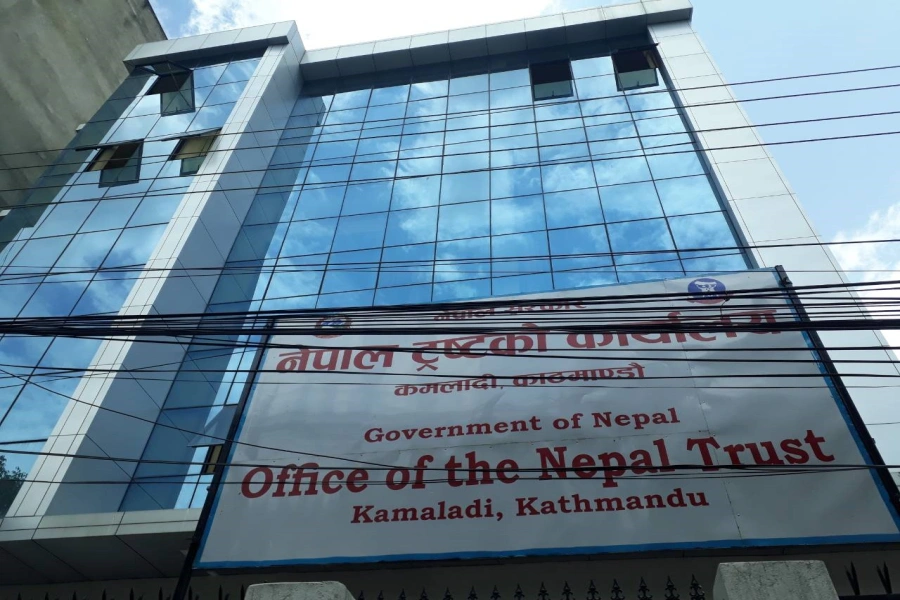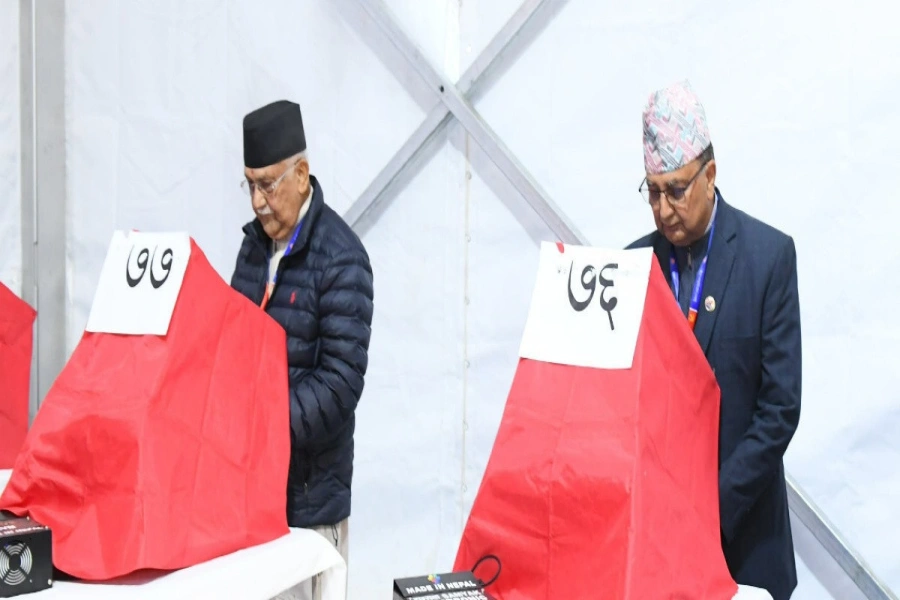A meditator who captured his practice of mindfulness in a canvas, Abbot Master Shi Tong Sheng is a graduate of the religious department of Renmin University of China. He was a member of the Tiexi district of Anshan City, at the Temple of Longfeng in Mount Kumgang, Liaoning province.The forth congress of the Buddhist association of the Hebei province, he is also the vice president of Buddhist association and Hebei Yongnian Anren Temple Abbot.
In an interview with My City’s Sonam Lama, Shi shared his deeper insights on his meditative journey with the world of arts.
Since this was your first visit to Nepal, how was the experience with Nepali crowd?
I had an amazing experience exhibiting my paintings here as I came across many artists who could actually connect with my work. With the assistance of Chinese to Nepali interpreters the exhibit was very successful to invite a good number of Nepali art lovers. Similarly in the order to keep this connectivity intact the citizens of both the countries should develop a deeper level of cultural understanding.
Beauty marks its presence

How is your method of art different to others?
The art that I have created is an outcome my meditation which gives it quite an intense touch to my work. Like many other artists I have tried to picture out my thought in canvas through colors however, the subject of my art is generated from my meditation which I have drawn out in canvas. It is different in the sense that these works of arts are the outcome of my practicing mindfulness in the course of meditation.
How do you find Nepali work of art different to Chinese?
Both Nepali and Chinese arts share an essence of beauty that allures viewers and art lovers and make them feel connected through it. Although the cultures may vary from one another and it could influence the creation of art in respective ways, the true richness of any form of art lies in its aesthetics that adds life to the piece of art. I believe art transcends the boundary of time, place and language which also implies to the fact that the sole meaning of art is one though its methods of creation are many.
Since you are meditation practitioner, why did you opt for painting over any other forms of art?
I believe art is a powerful representation of our imagination and which potentially manifests visions that our minds generate. Unlike words arts cultivate a sense of vision and are not confined to limited meanings and interpretation. With this thought I realized the need to portray it through the medium of color and painting.
How did the idea of calligraphy emerge?
Every work of art is generated out of a concept and reflects the meaning through it. However, it sometimes needs some directorial assistance to extract the meaning out of it. Thus, in order to direct the viewer to the implied meaning of my work, I have added some Chinese lettering and calligraphy.
Any words of advice for Nepali art lovers?
As an artist it is necessary to realize that the beauty of art is defined by the impact it creates on the mind of the observer. More to it, it should have the ability to hold a life in it and please one’s inner soul. Art being one of the effective mediums of representation should have the embodiment of spirituality in it. Therefore every time you make your creation it is crucial to keep in mind whether it can awaken the spiritual connectedness and bridge the gap between the observer and the artist.




































